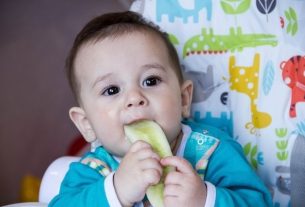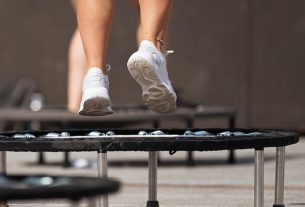The appearance of changes in a baby’s skin is very common during the first year of life, as the skin is still very sensitive and reacts against any type of substance, from sunlight to creams, shampoos and bacteria. Generally, skin changes are not serious and can be easily treated with creams and ointments recommended by your pediatrician.
Birthmarks normally do not require treatment and do not cause complications, but they should be observed by a pediatrician to ensure that they are not a sign of a more serious skin problem.
Skin problems in babies can usually be easily identified through their characteristics, however, it is always recommended to consult your pediatrician before starting any type of treatment.
1. Diaper rash
Sensitive content
This image may contain content that is uncomfortable for some people.
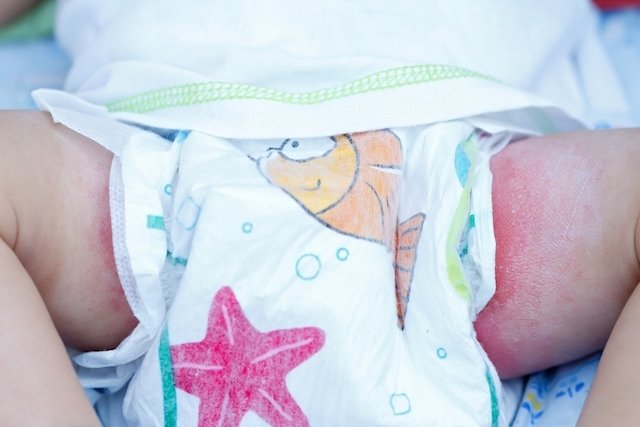
Diaper rash is common in babies who wear diapers, appearing as red spots on the baby’s bottom and genital region due to the contact of feces and urine with the skin, being very common on summer days and when the baby spends a lot of time with the same diaper.
How to deal with: keep the skin on the bottom and genital area clean and dry, changing diapers when they are dirty, and apply a diaper rash cream, such as Hipoglós, to protect the skin against the acidity of feces and urine. See what else you can do to cure baby diaper rash.
2. Acne neonatal
Sensitive content
This image may contain content that is uncomfortable for some people.
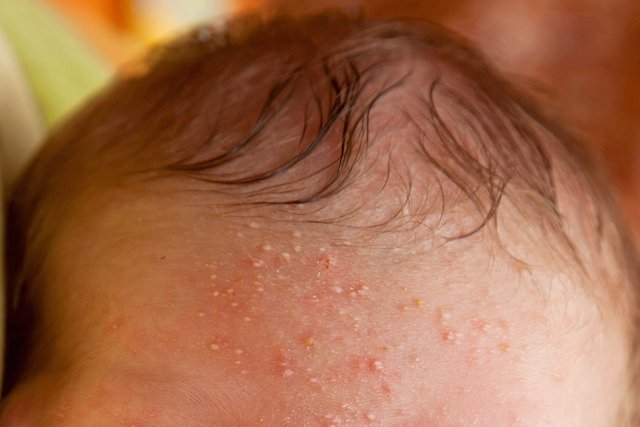
Neonatal acne can appear up to 6 months of the baby’s life, however, it is more common in the first 3 weeks, producing small red or white dots on the skin of the baby’s face, forehead or back.
How to deal with: There is no need for treatment for neonatal acne, it is only advisable to wash the affected area with water and soap with a neutral pH suitable for the baby’s skin. In cases where pimples do not disappear after 6 months, you should consult your pediatrician again to assess the need to start treatment with acne products.
3. Intertrigo
Sensitive content
This image may contain content that is uncomfortable for some people.
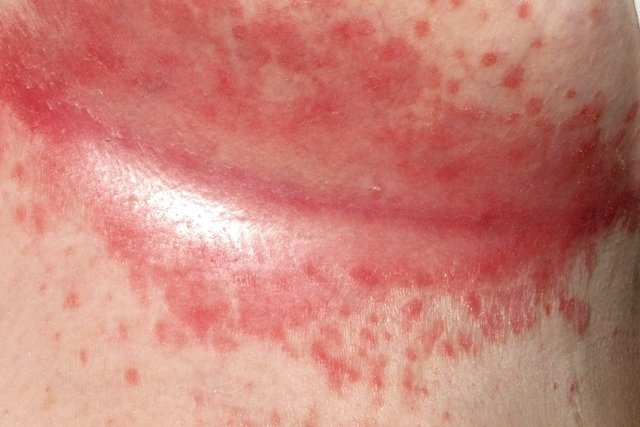
Intertrigo is a red spot on the baby’s skin that appears in the folds, such as the legs and neck, especially in chubby babies under 6 months of age. Normally, intertrigo does not bother the baby, but it can cause pain when it is very large.
How to deal with: wash and dry the skin area under the skin folds well and apply an ointment with vitamin A or zinc, such as Hipoglós, under medical supervision.
4. Seborrhea
Sensitive content
This image may contain content that is uncomfortable for some people.
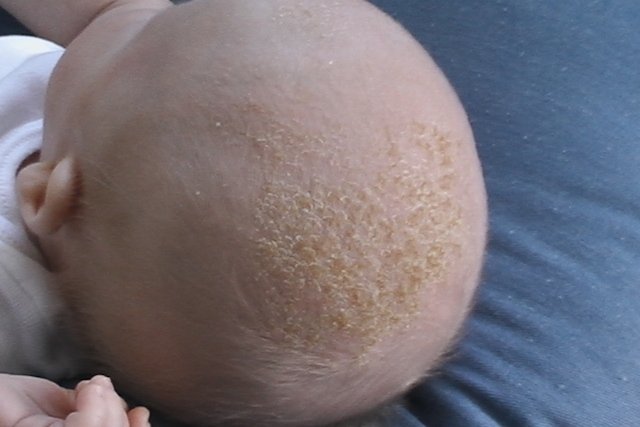
Seborrhea can appear as red spots on the eyebrows or scalp, as well as causing a thick, yellowish layer to appear on the baby’s head, similar to dandruff.
How to deal with: wash your hair with water and neutral pH shampoo suitable for babies and, after bathing, comb it with a soft bristle brush to remove the crusts. Another option is to apply warm oil before bathing to make it easier to remove scabs with a brush or comb.
5. Chickenpox
Sensitive content
This image may contain content that is uncomfortable for some people.
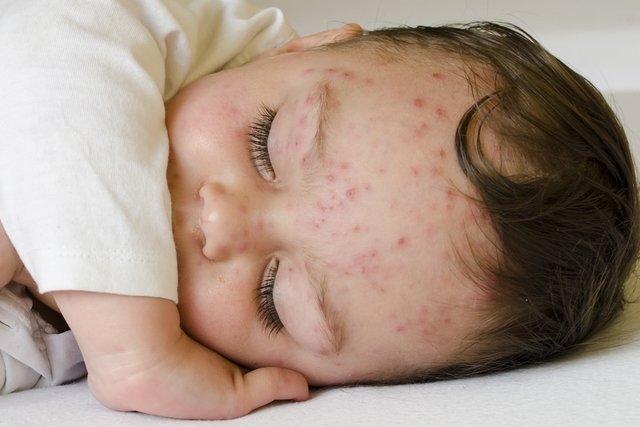
Chickenpox, also known as chickenpox, is a very common disease in babies and children that causes small spots to appear on the skin that cause a lot of itching, causing the baby to cry and become easily irritated.
How to deal with: It is recommended to consult your pediatrician before starting treatment, as it may be necessary to use anti-allergy ointments, such as Polaramine, to reduce symptoms and treat red spots. See more tips on how to treat Chickenpox.
6. Brotoea
Sensitive content
This image may contain content that is uncomfortable for some people.
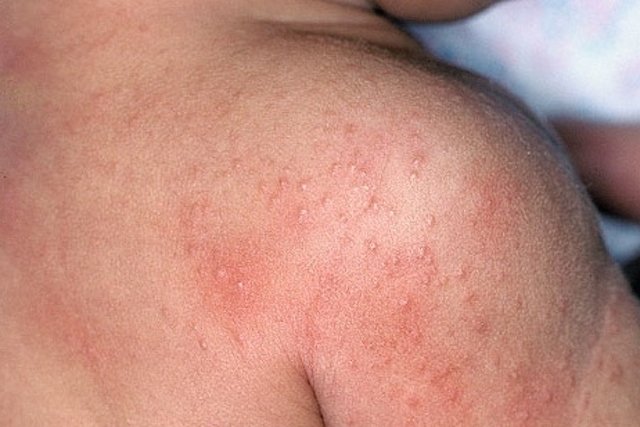
Heat rash consists of the appearance of small red or white dots on the skin due to excess heat and is therefore common after being in a hot car or when the baby is wearing a lot of clothes. The dots can appear anywhere on the body, especially on the neck, back, and in the folds of the arms and knees.
How to deal with: wear clothes appropriate to the season, avoiding very warm clothes indoors and in other hot environments. Furthermore, prolonged sun exposure should also be avoided, even when traveling in the car.
7. Do not roast millet
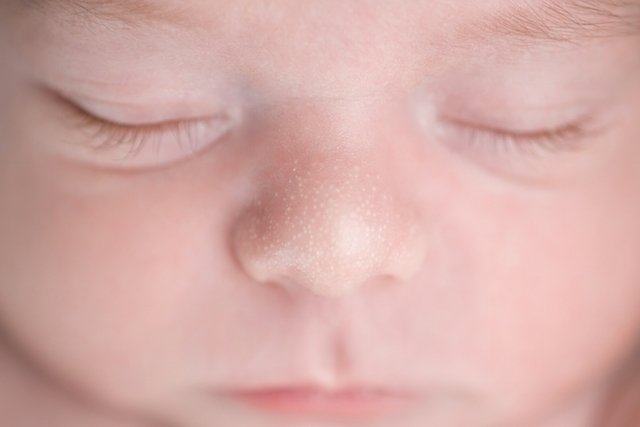
Milia are small cysts that appear on the baby’s nose or near the eyes. These are small and benign, and there is no need for specific treatment. They appear especially in summer, or when the newborn has a fever.
How to deal with: There is no need for specific treatment, but to prevent it from getting worse and turning into little balls filled with liquid, you can apply a cold saline compress, as this reduces perspiration, reducing the risk of the milium becoming full of sweat, which does not can be eliminated. See photos of this milium complication in newborns.
In addition to the recommended care, parents should take the baby to the pediatrician regularly to assess the progress of the spots and adapt the treatment, if necessary.
When to go to the doctor
It is important to consult your pediatrician when your baby presents symptoms such as:
- Constant irritation and crying;
- Wounds or ulcers on the skin;
- Blisters on the skin that may contain pus;
- Fever;
- Skin lesions that spread to other parts of the body;
- Lack of appetite;
- Weight loss.
Therefore, the doctor must carry out an assessment, identify the type of skin problem and indicate the most appropriate treatment.
If you want an evaluation by a pediatrician, schedule an appointment in the nearest region:
Taking care of your health has never been easier!

Sign up for our newsletter and stay up to date with exclusive news
that can transform your routine!


